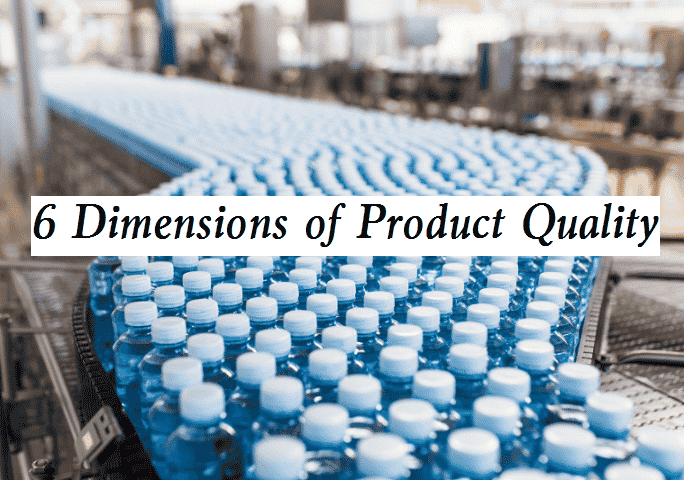For product quality, whether it is a simple or a complex product, it should be described by product quality characteristics. It is generally believed that the judgment of product quality can be summarized from six aspects, including product performance, service life, reliability and maintainability, safety, adaptability and economy.

How to Review the Quality of Products – 6 Dimensions of Product Quality
- Performance
Product performance refers to the ability of a product to achieve its intended purpose or specified purpose under certain conditions. Any product has its specific purpose or use. - Safety
Product Safety refers to the ability to protect human health, personal and property safety during the use, storage, transportation and sales of products. - Reliability
Product Reliability refers to the degree and ability of products to complete specified functions under specified conditions and within specified time. Generally, functional efficiency, mean life, failure rate, mean time between failures, mean time between failures and other parameters can be used for evaluation. - Maintainability
Product Maintainability refers to the ability of a product to quickly repair and restore its functions after failure. It is usually expressed by parameters such as average repair time. - Economy
Product Economy refers to the degree of cost paid or consumed in the design, manufacturing, use and other aspects of a product. At the same time, it also includes the degree to which it can obtain economic benefits, that is, the benefit ability of input and output. - Characteristics
The quality of products is characterized by different characteristics, and the evaluation of these characteristics will vary due to different scales mastered by people. In order to avoid the influence of subjective factors, it is necessary to have a basic basis and a unified scale in the production, inspection and evaluation of product quality.
6 Tips for Product Quality Control
- If the product has quality problems, the root cause, main factors or main manifestations of the problems shall be found; Before the problem is clear, the easy change of process actually covers up the real cause and problem.
- Quality depends on many factors, do not ignore any details. Any details shall be controlled and recorded with data as far as possible; Failure to control and trace process details will mislead the formulation of corrective and preventive measures.
- Can not be impetuous. Don’t ignore the abnormal situation because it seems to have nothing to do with the problem to be solved. Don’t take action when you can’t find out the reason and rule. You can control and standardize the influencing factors of analysis. Review some experiences and laws from previous experiments and summaries; Once some experiences and laws are discovered, it will be worth the cost to go further and raise them to theory.
- The highest realm of quality management is prevention, not how to save after a problem; There must be signs before any quality problem occurs. It depends on whether you have methods, means and experience to monitor and identify; When the same quality problem occurs for the second time, great attention should be paid to it; The daily process and result data should be sorted out with certain tools, and the rules and change trends should be found from the sorted results. These rules and displayed trends need to be constantly revised; The consistency of all control elements shall be as high as possible before processing the product.
- Do not expect to directly rely on technicians to achieve the stability of product quality; The product quality is manufactured. Without the management of the direct manufacturer, the quality will never be stable; Therefore, it is necessary to observe, pay attention to and study the performance and status of direct product manufacturers, and manage and mobilize this performance and status; If the performance and status of the direct manufacturer of the product are not under control, once there is a quality problem, you will never analyze the cause of inaccuracy; Don’t think that the process control requirements specified in our current process discipline are met, and the product quality is absolutely no problem; Therefore, our process control requirements should be constantly improved and people should be well managed.
- Don’t think that if others don’t know the reality and can’t solve the problem at once, their opinions will be worthless. But they, especially the direct manufacturers of products, can give us a lot of tips and reminders; If you can solve this problem, you can listen to anyone’s opinions and suggestions. But when you are unsure, it is suggested that anyone’s opinions and suggestions should be listened to, tried, and tested, whether you agree or not. The thinking of quality management often touches the cutting edge of science and technology. Even a casual sentence or complaint may guide or imply a major technological innovation direction. Therefore, professional technicians should pay attention to details and be good at capturing details.